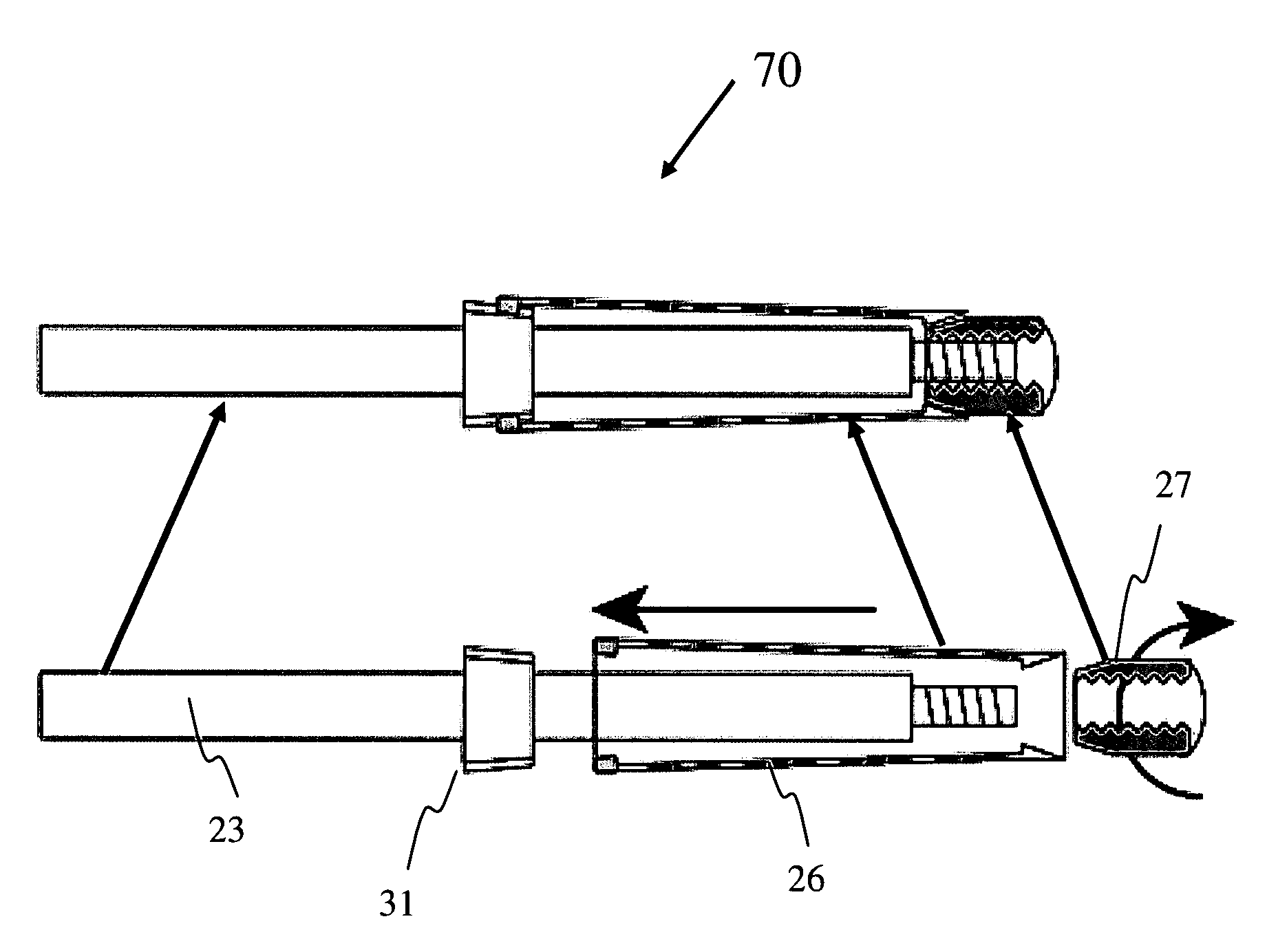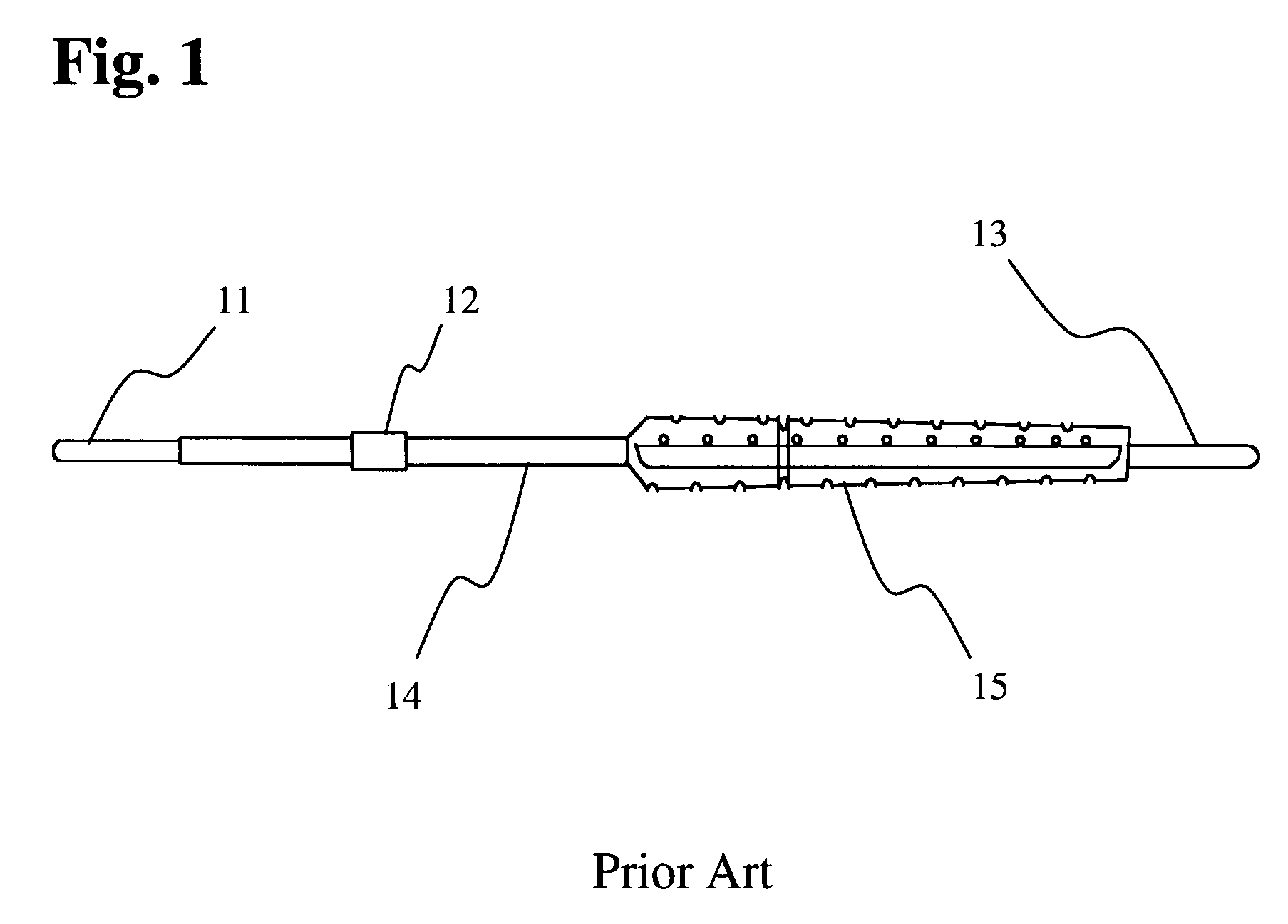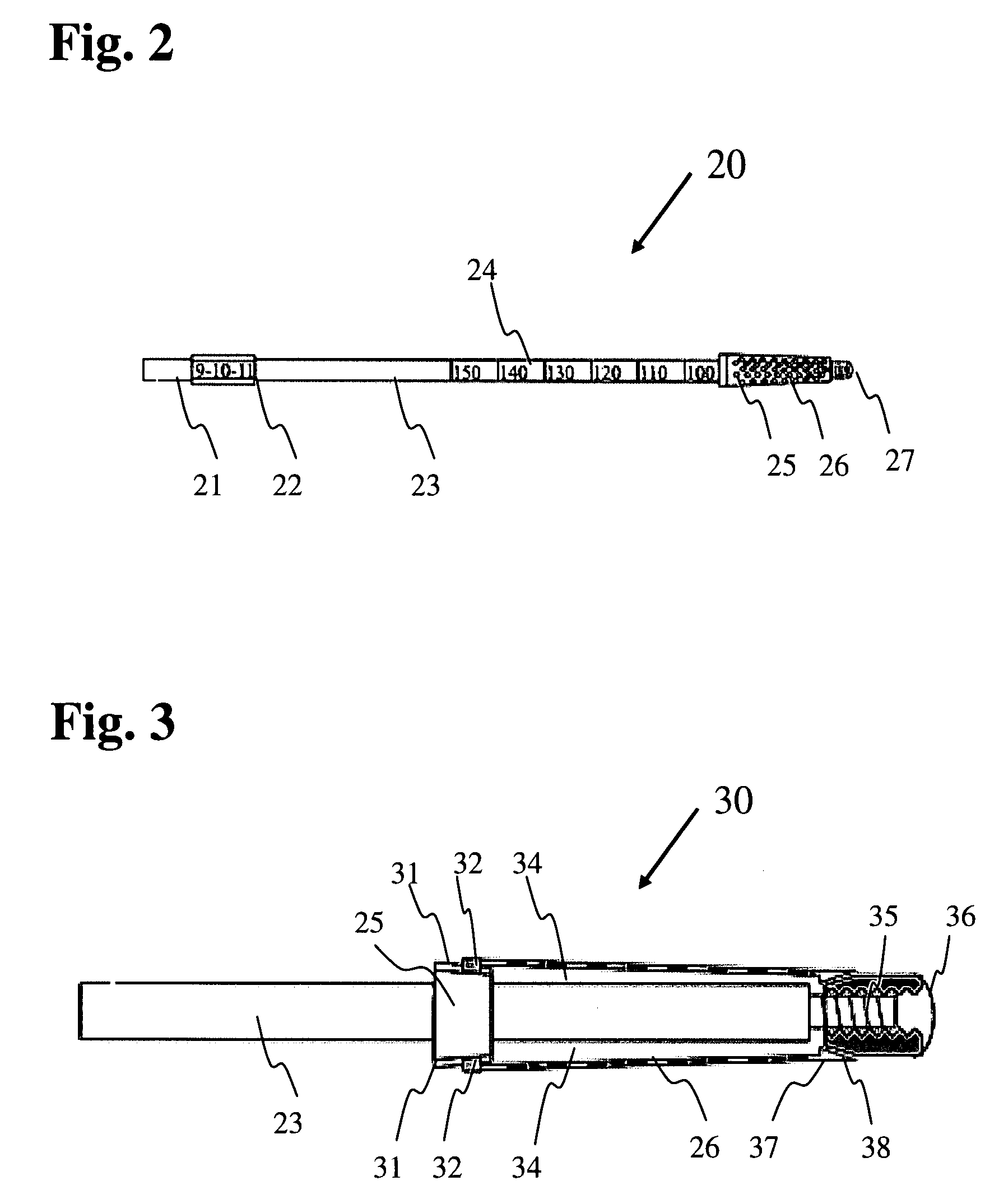Modular tapered hollow reamer for medical applications
a tapered hollow reamer and modular technology, applied in the field of medical applications, can solve the problems of poor cutting performance, bone necrosis, poor cutting performance, etc., and achieve the effect of reliably transferring shaft torque, preventing wobbliness of shaft torque during cutting, and reducing the possibility of bone fragment incorporation into living bone tissu
- Summary
- Abstract
- Description
- Claims
- Application Information
AI Technical Summary
Benefits of technology
Problems solved by technology
Method used
Image
Examples
Embodiment Construction
[0033]Reaming of the internal canal of bones is required during many orthopedic surgical procedures. These procedures include hip replacement, knee replacement and shoulder replacement. Other surgical procedures that see the use of reamers include internal fixation procedures for fractures. Typically, reaming of the internal bone canal is achieved through utilization of a solid cylindrical or tapered reamer, illustrated in FIG. 1. Prior art reamers typically include a driver coupling 11 (shown as a Jacob chuck connector), a size designation 12, a pilot tip 13, a shaft 14, and cutting flutes 15. FIG. 1 shows a tapered reamer, however cylindrical reamers of similar design also exist in the prior art. Those solid cylindrical or tapered reamers currently utilized are required to cut both cancellous bone (spongy bone) and cortical bone (hard bone). Cortical bone is generally denser and stronger, requiring an efficient cutter to machine the canal for a proper fit of the implant. Conventio...
PUM
 Login to View More
Login to View More Abstract
Description
Claims
Application Information
 Login to View More
Login to View More - R&D
- Intellectual Property
- Life Sciences
- Materials
- Tech Scout
- Unparalleled Data Quality
- Higher Quality Content
- 60% Fewer Hallucinations
Browse by: Latest US Patents, China's latest patents, Technical Efficacy Thesaurus, Application Domain, Technology Topic, Popular Technical Reports.
© 2025 PatSnap. All rights reserved.Legal|Privacy policy|Modern Slavery Act Transparency Statement|Sitemap|About US| Contact US: help@patsnap.com



